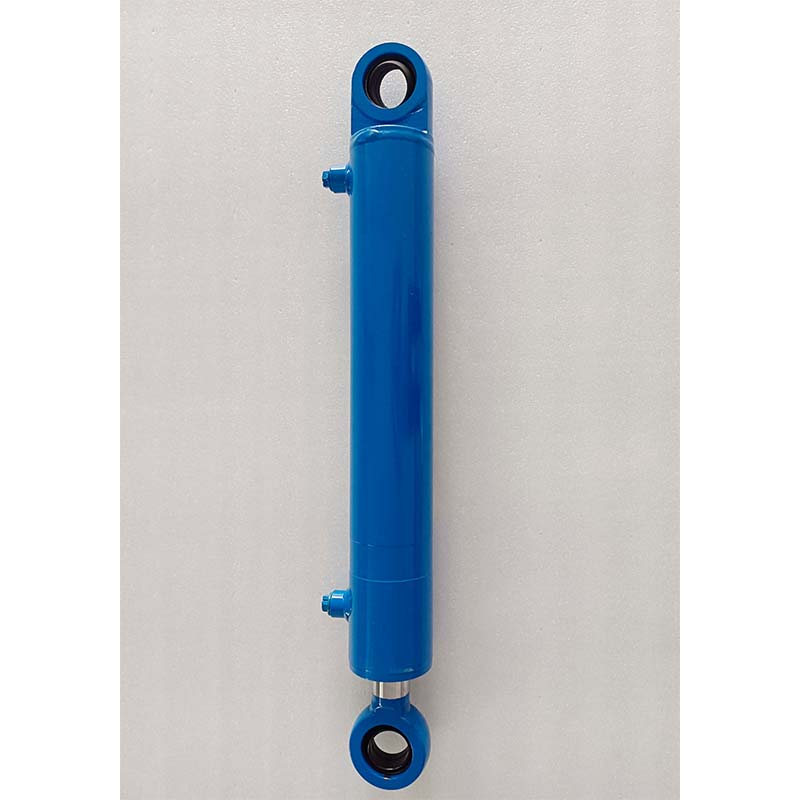ធ្នូ . 20, 2024 04:21 Back to list
custom front flange hydraulic cylinder
Custom Front Flange Hydraulic Cylinder Enhancing Performance and Versatility
Hydraulic cylinders are vital components in various industrial applications, providing efficient power transmission and control in machinery. Among the different types of hydraulic cylinders, the custom front flange hydraulic cylinder stands out due to its unique design and adaptability. In this article, we will explore the significance of these cylinders, their construction features, and the range of applications they serve.
Understanding Hydraulic Cylinders
At their core, hydraulic cylinders are devices that convert hydraulic energy into mechanical force. They consist of a cylindrical barrel filled with hydraulic fluid, a piston, and a rod. When hydraulic fluid is pumped into the cylinder, it pushes the piston, causing the rod to extend or retract. This linear motion is critical for tasks such as lifting, pushing, and pulling in various industrial and mobile applications.
The Importance of Customization
The ability to customize hydraulic cylinders to meet specific requirements is crucial for optimizing operational efficiency. Custom front flange hydraulic cylinders are designed with a particular focus on the front flange, an essential component that connects the cylinder to the machine or equipment it operates. The front flange allows for easy installation and provides structural integrity by distributing stress evenly across the cylinder body.
Customization can involve several aspects, including the size and shape of the flange, material selection, and specific performance characteristics such as stroke length, bore diameter, and pressure ratings. Tailored designs enable manufacturers to produce cylinders that fit seamlessly into existing systems, enhancing performance and reliability.
Features of Custom Front Flange Hydraulic Cylinders
1. Robust Construction Custom front flange hydraulic cylinders are typically made from high-strength materials like steel or aluminum, which ensures durability and longevity even under demanding conditions. The front flange is often designed to be thicker and reinforced to withstand high pressures and loads.
2. Precision Engineering The design and manufacturing processes often involve advanced technologies such as computer-aided design (CAD) and computer numerical control (CNC) machining. This precision ensures that every component meets strict tolerances, resulting in enhanced performance and reduced wear over time.
3. Versatile Design Options Manufacturers can offer a variety of options to suit different applications. These may include adjustable mounting positions, special seals for enhanced leak resistance, and various porting options for easy integration with hydraulic systems.
custom front flange hydraulic cylinder

4. Enhanced Performance Custom hydraulic cylinders can be designed to optimize stroke speed and force output, delivering the right amount of power precisely where it is needed. This is particularly beneficial in applications requiring quick response times and repetitive motions.
Applications of Custom Front Flange Hydraulic Cylinders
The versatility of custom front flange hydraulic cylinders allows them to be used in a wide range of industries, including
- Construction In construction equipment such as excavators and bulldozers, these cylinders provide the necessary force for lifting and moving heavy materials.
- Manufacturing Hydraulic presses often use front flange cylinders to perform tasks like stamping, bending, and forming materials with precision and power.
- Agriculture Agricultural machines, such as tractors and harvesters, utilize these cylinders to facilitate tasks like lifting, steering, and plowing.
- Automotive In automotive applications, custom front flange hydraulic cylinders are used in hydraulic lifts and assembly lines, enabling efficient movement and positioning of vehicles and components.
- Marine In marine applications, these cylinders can control various shipboard functions, including hatch opening and closing, as well as stabilizing mechanisms.
Conclusion
Custom front flange hydraulic cylinders exemplify the combination of strength, precision, and adaptability that today's industries demand. By investing in customized solutions, manufacturers can ensure their operations are not only efficient but also equipped to handle the challenges of modern production environments. As technology advances, the potential for further enhancements in hydraulic cylinder design will likely continue to transform various sectors, driving performance and innovation in ways we have yet to imagine.
-
High-Precision [90/105-50-180-480] Industrial Component | Durable & Reliable
NewsAug.27,2025
-
High-Performance Set of 50/60-45-290 471 | Durable & Reliable Components
NewsAug.26,2025
-
Efficient Pallet Truck Power Units - Reliable Hydraulic Systems
NewsAug.25,2025
-
Premium Set of 50/60-45-290 471 Parts | High Performance
NewsAug.24,2025
-
Efficient & Reliable Double Acting Power Unit | Hydraulic Solutions
NewsAug.23,2025
-
1.5 Ton Turbocharged Cylinder 80/95-40/60-35-124 | High Performance
NewsAug.22,2025
